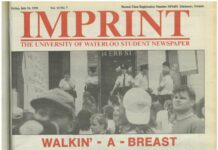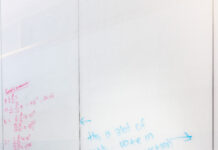For years, physicists have faced challenges in replicating cosmic phenomena in a laboratory setting. However, a team of researchers at the University of Waterloo have overcome this challenge to observe the ‘Unruh effect.’
The Unruh effect, which was first identified by Canadian physicist Bill Unruh, proposes that an accelerating observer in space will perceive a thermal glow around the objects they view, while a stationary observer will not.
The ‘Unruh effect’ relates closely to Stephen Hawking’s prediction of black holes emitting radiation.
Barabara Šoda, a Ph.D. student in physics at UW and part of the research team that studied the Unruh effect, explained this phenomenon.
“Black holes are believed to be not entirely black,” she told WaterlooNews. “Instead, as Stephen Hawking discovered, black holes should emit radiation. This is because, while nothing else can escape a black hole, quantum fluctuations of radiation can.”
While it was previously difficult to recreate the acceleration needed to observe the Unruh effect in a lab, the researchers were able to amplify the effect using high-intensity lasers. By hitting an accelerated particle with the laser, the Unruh effect could be measured.
Another key finding of the research revealed that when acceleration and deceleration were balanced, the accelerated particle appeared transparent.
The outcome of observing these phenomena in the lab helps link the theory of general relativity proposed by Einstein and the theory of quantum mechanics proposed by Bohr and Planck.
The theory of general relativity states that the gravitational effect of a mass is a result of a distortion in spacetime, while the theory of quantum mechanics studies the particle-wave nature of objects on a subatomic scale.
“The theory of general relativity and the theory of quantum mechanics are currently still somewhat at odds, but there has to be a unifying theory that describes how things function in the universe,” said co-researcher Achim Kempf, a professor and member of the Institute for Quantum Computing at UW. “We’ve been looking for a way to unite these two big theories, and this work is helping to move us closer by opening up opportunities for testing new theories against experiments.”
“We have here a viable option to explore this interface in a laboratory setting. If we can figure out some of these big questions, it could change everything,” said co-researcher Vivishek Sudhir.
The team’s paper on this research, titled “Acceleration-Induced Effects in Stimulated Light-Matter Interactions,” has been published in the scientific journal Physical Review Letters.































